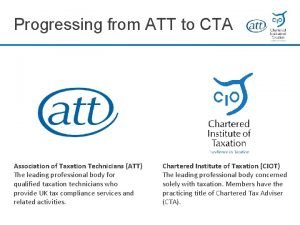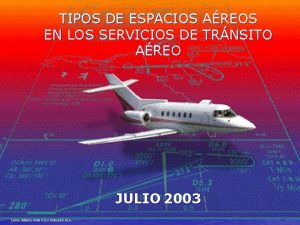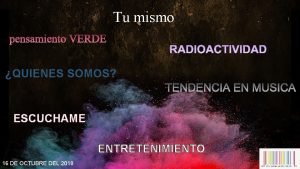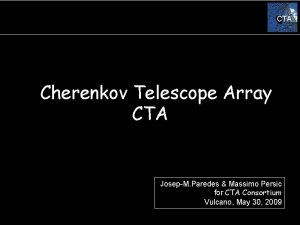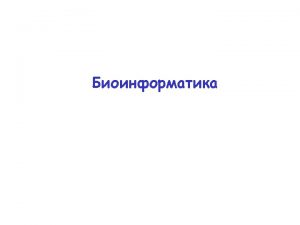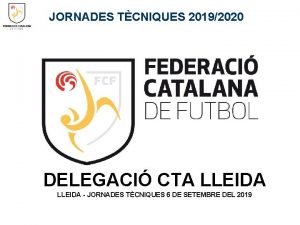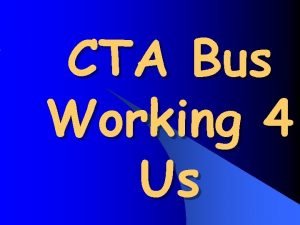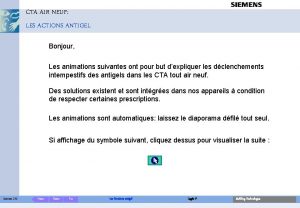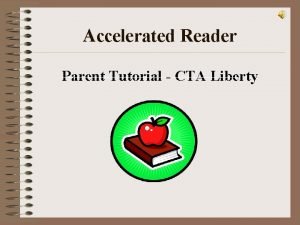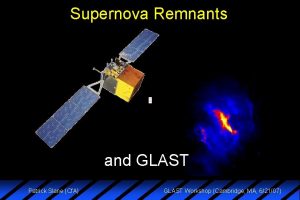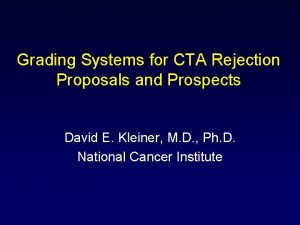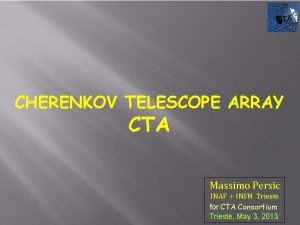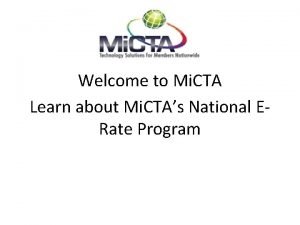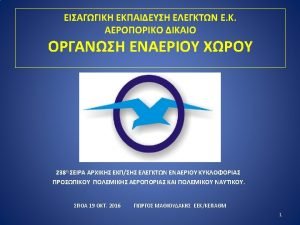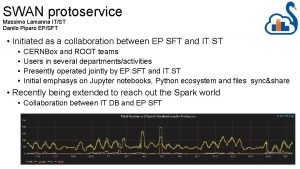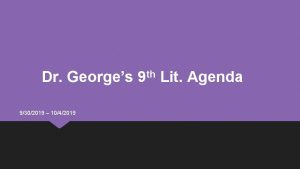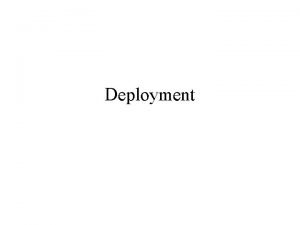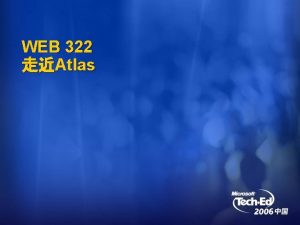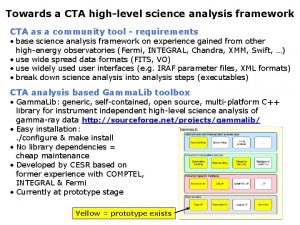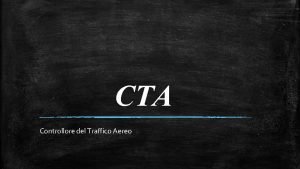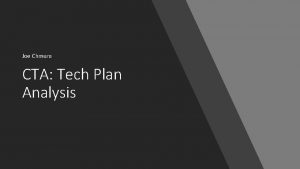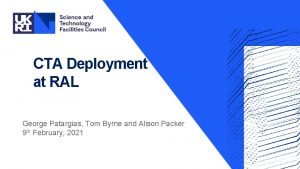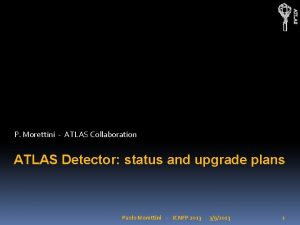CTA ATLAS deployment 1042019 ITST 9152020 CTA ATLAS


















- Slides: 18

CTA ATLAS deployment 10/4/2019 IT/ST 9/15/2020 CTA / ATLAS meeting 1

Overview • CTA migration strategy and open questions (Giuseppe and Michael) • eosctaatlas deployment status, commissioning tests (Julien) • Drive time efficiency and queueing latency (Germán) • ATLAS activities & intra-VO fairsharing / storage classes (Eric) 9/15/2020 CTA / ATLAS meeting 2

CASTOR to CTA Migration ATLAS tape files in CASTOR • 84, 062, 944 files in group zp • 86, 689, 714 files in file classes atlas_raw, atlas_prod, atlas_user (and 7 others like *atlas* with under 2 m files each) • Several thousand files with no tape copy (zero-length files; files in atlas_no_tape file class) CASTOR Namespace • /castor/cern. ch/grid/atlas (70, 716, 745 files) • /castor/cern. ch/atlas (5, 805, 960 files) • /castor/cern. ch/user (10, 209, 365 files) CASTOR Access Control • Directories have POSIX permission bits (95% are 755 or 775. 5% split over 50 combinations) • 17% of directories also have Access Control Lists. Around 9, 000 combinations. 9/15/2020 CTA / ATLAS meeting 3

CASTOR to CTA Migration • CASTOR has a single namespace. CTA will partition the namespace into five instances (one per LHC experiment and one for PUBLIC). • How to determine which instance a file belongs to? There are three hints: • File class • Directory branch in the namespace • Group ID • The minimum granularity for migration is a single cassette 9/15/2020 CTA / ATLAS meeting 4

CASTOR to CTA Migration 9/15/2020 CTA / ATLAS meeting 5

CASTOR to CTA Migration 9/15/2020 CTA / ATLAS meeting 6

Migration Questions (1) Experiment and User file classes • atlas_user will be migrated to the ATLAS instance • User data is mixed with legacy production data on the same tapes We propose to NOT migrate the following metadata: • Zero-length files, files with no tape copy, deleted files. (This metadata will remain accessible in the CASTOR namespace). • Group IDs for individual files/directories. After the migration, all will be set to zp. • POSIX permissions and Access Control Lists. A new set of permissions will be created in EOS+CTA according to ATLAS use cases. 9/15/2020 CTA / ATLAS meeting 7

Migration Questions (2) Where should migrated files appear in the EOS+CTA namespace? • We propose to have the new namespace under /eos/cta/atlas • Option 1: Keep migrated data and new data separate • /castor/cern. ch/grid/atlas/ → /eos/cta/castor/grid/atlas/ • New data under /eos/cta/atlas/ • Option 2: Keep migrated data and new data in the same branch • /castor/cern. ch/grid/atlas/ → /eos/cta/atlas/ • New data under /eos/cta/atlas/ • Same question for /castor/cern. ch/user/ 9/15/2020 CTA / ATLAS meeting 8

Migration Milestones Preparation • Agree how files (i. e. , tapes) will be partitioned between EOSCTA ATLAS and EOSCTA PUBLIC_USER • Agree on access use cases : users, groups and permissions • Migrate metadata to test instance (files remain accessible only from CASTOR) Live Migration • Select files to be migrated; disable the tapes in CASTOR • Subsequent metadata operations on these files (delete, rename) are strongly discouraged! • Copy metadata to intermediate table in CTA database (DBLINK) • Inject directory metadata into EOS namespace • Inject file metadata into EOS namespace • Inject tape file metadata into CTA catalogue • Enable tapes in CTA Disaster Recovery/Rollback • CTA will be prohibited from writing to tapes imported from CASTOR • To return a tape to CASTOR, disable the tape in the CTA catalogue and re-enable the tape in CASTOR 9/15/2020 CTA / ATLAS meeting 9

CTAATLASPPS transfers • First ATLAS data archival to CTA with SSDs • • 16 TB of SSD buffer, 7 tape drives 250 TB of data were written to tapes Average throughput 1. 5 GB/s Transfer efficiency of 20% due to missing free space feedback (planned FTS feature) • First ATLAS data retrieval from CTA with SSDs • 250 TB of data are currently being retrieved • Average throughput 1. 5 GB/s • Transfer efficiency of 96% 9/15/2020 CTA / ATLAS meeting 10

ATLAS and overall drive time efficiency • ~2/3 of ATLAS drive utilisation adsorbed by “default” - despite only 45% of data • Large impact of mount, unmounting and positioning (1 st file) • With dataset-level reading, “default” drive usage would be ~50% less… • … liberating drive resources (less queueing/latency, more parallel reading) 9/15/2020 CTA / ATLAS meeting 11

ATLAS and overall drive time efficiency • ~2/3 of ATLAS drive utilisation adsorbed by “default” - despite only 45% of data • Large impact of mount, unmounting and positioning (1 st file) • With dataset-level reading, “default” drive usage would be ~50% less… • … liberating drive resources (less queueing/latency, more parallel reading) 9/15/2020 CTA / ATLAS meeting 12

ATLAS 2018 queueing latency 9/15/2020 CTA / ATLAS meeting Latency (time to last bit of file): • default: median 0. 41 d; mean 1. 7 d • t 0 atlas: median 0. 29 d; mean 0. 64 d 13

ATLAS activities / intra-VO fairsharing / storage classes • FTS will propagate activity and CTA will honour it • Activities configuration in FTS mirrored in CTA (map of tags to integer weights) • Activity tag passed through Xrootd and EOS by FTS • Mounts arbitrated between activities (weighted fair share) • CTA will then arbiter retrives using either FIFO or Bandwidth criteria • All FIFO for Atlas, mixed case possible. • Cap of “parallel writes” for a given tape pool • Parallel writing: how many tape do we simultaneously open for writing at the same time? • But. . . creates an upper bound on the migration bandwidth (caps the number of parallel mounts) • Tape dedicated to either repack or new data within a write mount. • Fail retrieves with more information, and faster (new possible idea) • Fail requests earlier (and with more detail) when the data will not come in the foreseeable future • Example: Tape sent to repair Storage class: • Number of copies (1 in our case) • Copy number to tape pool map (1 in our case) Tape pool: • Owning VO • Max number of partial tapes (parallel writes) • Encryption Mount Policy • Max archive and retrieve drives • Retrieve prioritisation: <Bandwidth|Latency> (to be added) Activities (to be added) • Tag • Weight • Discriminate with transient problems • Example: disk buffer full 9/15/2020 CTA / ATLAS meeting 14

CTA and tape read efficiency • The CTA project is looking at improving resource efficiency from several angles • • optimising tape and drive scheduling (integrated in CTA sw) read access ordering on LTO (“CERN RAO”) – WIP minimising disk contention and capacity waste (Julien’s SSD disk layer) Others • larger file sizes – requires collaboration with experiments • efficient pre-staging (complete data sets) • collocation hints (Archival WG future output) for increasing contiguous file access 9/15/2020 ATLAS + CERN Tape German. Cancio@cern. ch 15

Why do we split data across tapes? Operational reasons that require splitting of input streams during writes: • ensure aggregated performance and time-to-tape latency SLA’s in writing (each Run 3 tape drive will only sustain 0. 3 -0. 5 GB/s) (cf Julien’s slides at Rucio workshop) • non-availability of tapes (eg. under repair, stuck in a drive) • long library queueing wait times (busy drives, robotics) • library (segment) downtime or maintenance • potential impact of “holding back to collocate” on CTA buffer (and pit/T 0 buffer) • Tape technology will be growing faster in capacity (~20% CAGR) than in throughput (10 -15% CAGR) • Future evolution may require us to consider striped tape writing such as RAIT (cf as done in HPSS) 9/15/2020 ATLAS + CERN Tape German. Cancio@cern. ch 16

How does this splitting affect performance? • 9/15/2020 ATLAS + CERN Tape German. Cancio@cern. ch 17

Example • Assumption: ATLAS reading out, then processing complete (large) datasets • Dataset size: 10 TB; nominal drive speed: 350 MB/s; effective speed factor: 0. 7 (0. 3 for positioning) -> 245 MB/s • Case a) fully collocated writing -> single tape @ factor 1 Fully collocated: 1 drive 2 drives Read speedup Effective per-drive Read time (s) factor speed factor 2857. 142857 1 1 2857. 142857 N/A • Case b) multiplexed writing -> N tapes in parallel @ factor 0. 7 Multiplexed: 1 drive 2 drives: 3 drives: 5 drives: Read time (s) 4081. 632653 2040. 816327 1360. 544218 816. 3265306 Read speedup factor Effective per-drive speed factor 0. 7 1. 4 2. 1 3. 5 0. 7 • → Multiplexing enables substantial latency and performance gains • NB: Tape drive cost is not part of ATLAS pledge but CERN/IT; operational overheads are borne by CERN/IT in any case (0. 3 tape drive overhead, EOS disk overhead due to redundancy, switch/router network overheads, etc) 9/15/2020 CTA / ATLAS meeting 18
